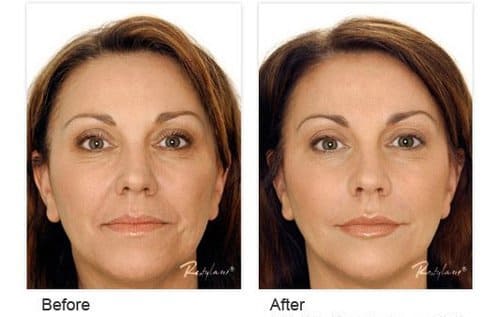
Dermal fillers, also known as injectable implants, soft tissue fillers, lip and facial fillers, or wrinkle fillers are medical device implants approved by the FDA for use in helping to create a smoother and/or fuller appearance in the face, including nasolabial folds (the lines extending from the sides of the nose to the edges of the mouth), cheeks, chin, lips, and back of the hands.
Since some dermal fillers are naturally absorbed over time, patients may need to repeat the procedure after some time to maintain the desired effect. Successful results will depend on the underlying tissue structure and the volume and type of filler used. The time that the effect lasts depends on the filler material and the area where it is injected.
The FDA has approved dermal fillers for use in adults 22 years of age or older (over the age of 21) for specific uses:
The FDA recommends against using dermal fillers or any injectable filler for body contouring and enhancement to:
These uses for dermal fillers are not approved by the FDA.
As with any medical procedure, there are risks involved with the use of dermal fillers. It is important to understand their limits and probable risks.
Any dermal filler can cause temporary side effects, permanent side effects, or both. Most side effects associated with dermal fillers occur shortly after injection and many resolve in a few weeks. Swelling and pain after hand treatment may last a month or longer. In some cases, side effects from a dermal filler injection may appear weeks, months, or years after injection.
The most concerning risk associated with the use of dermal fillers is unintentional injection into a blood vessel, leading to blocked blood vessels and poor blood supply to tissues. While the chances of this happening are low, if it does happen, the resulting complications can be serious and may be permanent. Complications reported include necrosis (death of tissue), vision abnormalities including blindness, and stroke.
Patients should be tested for allergies before using fillers made with certain materials, especially animal-derived materials (for example, cow (bovine) or rooster comb).
The following risks accompany FDA-approved uses of dermal fillers. The risks associated with unapproved uses of dermal fillers, or with the use of unapproved products are not known.